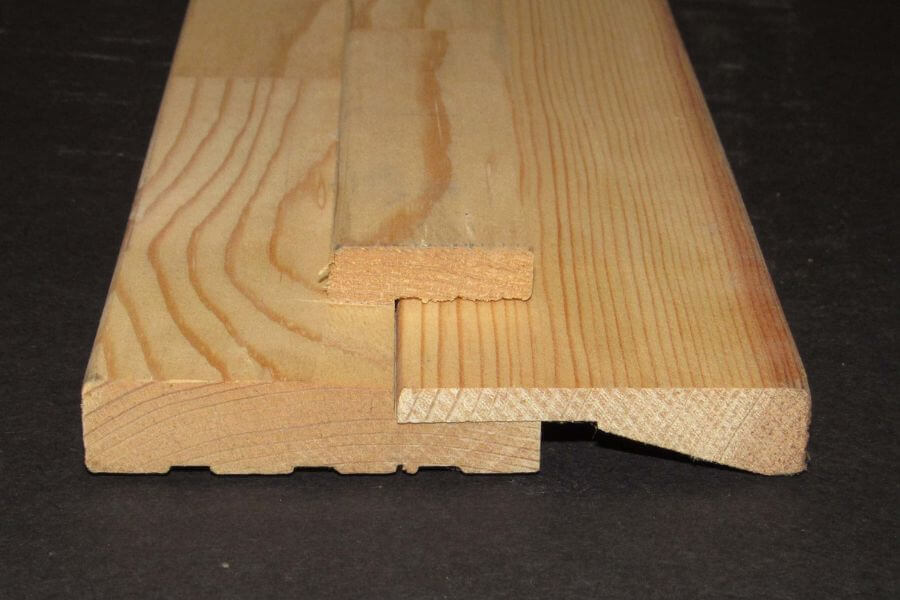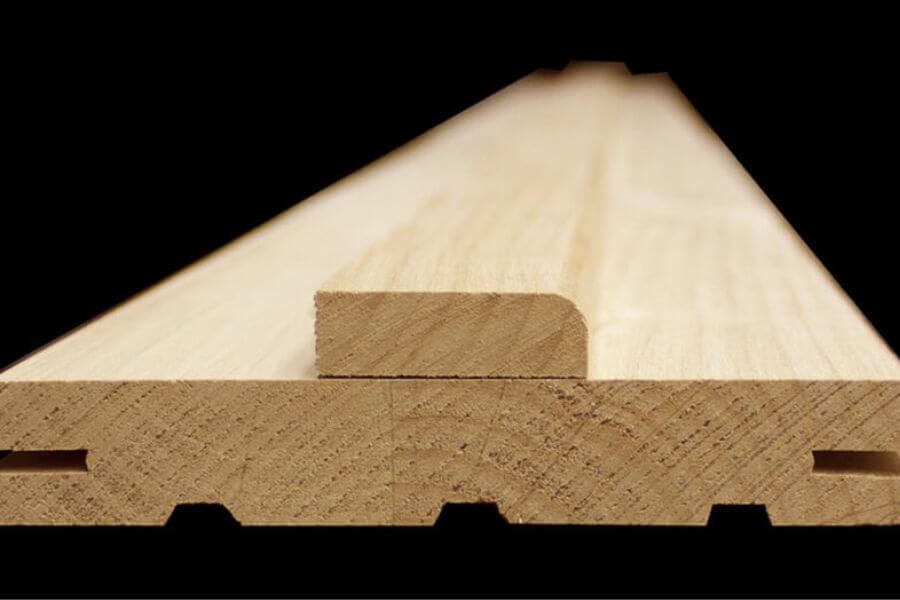Doors are integral to any building. We go through them every day without thinking about it, but doors are a little more complex than that.
Doors are our entry and exit points from one space or another, and the most important thing about them is that they provide us security by having control over who has access through the doorway.
But what keeps the door in place? That is called the door jamb or, simply put, just jambs. So let’s understand what door jambs are all about and their types.
What is a Door Jamb?

A door jamb is a component in the door frame found on both sides of the frame. The primary function of the jamb is to support the weight of the door and is responsible for maintaining the stability of the door frame.
The door has two jambs; one is where the hinge is mounted so the door can swing, while the other holds the door latch strike plate for the door knob’s lock mechanism.
People often confuse the door jamb with the frame or casing; the jamb is only the left and the right side, while the casing is both the two jambs and the top part called the “header” combined.
When you look at the finished product, the door jamb is usually not visible and can only be seen in limited detail when you open the door.
Why Is It Called a Door Jamb?
The door jamb is the interior left and right of the door frame. The word jamb came from the old French word “jambe,” which means “leg,” but sometimes also the sidepost. In the different parts of the door, the only two components that may be referred to as jambs are the vertical interior sides of the frame.
There are two types of jambs: the split jamb and the flat jamb.
What is a Split Jamb?

A split jamb is used when the interior wall’s rough frame is wider than the standard opening or a pre-hung door does not fit. When you want to install the door quickly, and the price is a concern, this type of jamb is the better choice.
How Does a Split Jamb Door Work?
Split-jamb doors feature a two-piece jamb that is separated lengthwise before installation and is fitted together by sandwiching the front and back parts of the casing to the doorway.
Then shims close the gaps and tightly secure the space between the jamb and the doorway’s rough opening.
Every component of the door is already premade; all you need to do is hang the door, secure it with nails, and it is done.
Advantages of Split Door Jambs
Split door jambs are pretty easy to work with; there are many other reasons why you should choose this type of jamb, namely:
- It is flexible – one of the main reasons why people choose split door jambs because they can easily fit into doorways, whether it is thick or thin than the usual. It is easily adjustable depending on what you require.
- It is quick to install – because the jamb is split, it is easier to line up the door, and it won’t take much time during installation.
- It is inexpensive – it comes as a complete system with pre-casing; right off the bat, you need to align the door, secure the gaps using shims, and secure it using nails.
These features make split jambs a good choice for most property owners who want a fast and easy way to install doors.
Disadvantages of a Split Door Jambs
Although the reasons why you should choose a split door jamb are hard to contest, there are still a few deal-breakers when using a split door jamb like:
- It is easily prone to damage – split jambs are usually durable, but since these are two pieces combined, they can be susceptible to some damage over time.
- It can be slightly misaligned – when the door installation is done, it may have an unnoticeable misalignment caused by its design.
These problems may not always occur when choosing the split jamb door, and if you think these complications can be easily worked around, then you can use this type of jamb.
What is a Flat Jamb?

Flat Jambs are traditionally used when the property has a standard-size doorway opening matching the door frame. This is usually the initial choice of property owners when installing a door since it offers more security.
How Does a Flat Jamb Door Work?
Flat Jambs ensure everything is fitted correctly by leveling the frame and everything is aligned to ensure the door’s stability.
A trim may be necessary to level the door frame perfectly. Then the flat jambs are added to the sides of the doorway vertically and pinned using nails. You may add decorative pieces to fill in gaps or cracks at the door.
Advantages of Flat Door Jambs
There is a reason why flat jambs usually come to mind when choosing the right door jamb. This is because of the many benefits it brings to a door:
- It is durable – since the flat jamb is one solid core, it can withstand and hold more weight.
- It is easier to shim – since the flat jamb comes in without the casing, it is easier and more effective to pass the shim from both sides.
If the dimensions are aligned with the doorway, you will have a sturdy door to protect you.
Disadvantages of a Flat Door Jambs
Not everything about the flat jamb is good, and here are some pain points to consider when using the flat door jamb:
- It takes more time – doing the trim takes more time, unlike the split jamb.
- It is more costly – it can cost more for both materials and requires more labor to finish the installation.
If security and stability are what you’re looking for in a door and you don’t mind the extra labor and cost, the flat jamb is the way to go.
What Is the Difference Between a Flat Jamb and a Split Jamb?
Choosing which door jamb to use can be difficult; some people feel that they choose the flat jamb because of its structural integrity, especially for heavy-duty doors, even though it may be costly and take time to build. On the other hand, some would choose split jambs because of how easy and inexpensive they are to install.
Whatever option you choose between the two, there is no wrong answer. Both are strong and will do their job correctly when properly installed. Knowing what type of jamb to use depends on your doorway’s dimension and situation.
What matters the most is that you built a sturdy door that can provide you with that sense of security.
F.A.Q.
What Is a Rabbeted Jamb?
A rabbet is a groove or recess carved into a piece of wood’s edge. The “stop” is a rabbeted edge with a seal and latch for interior doors that offers separation.
There are two types of rabbeted jamb which are single-rabbet and double-rabbet. Single-rabbet refers to holding a single door, while double-rabbet can hold two doors that can be pushed or pulled inside.
Rabbets would give its shape the stability required to support the entire door.
What Is a Pocket Door Jamb?
A two-piece jamb without a stop is used in place of the frame’s hinge jamb. The door can slide into the wall without the stop, thanks to a cavity that extends the vertical height of the jamb.
The door is used to slide into the wall cavity to open it.









